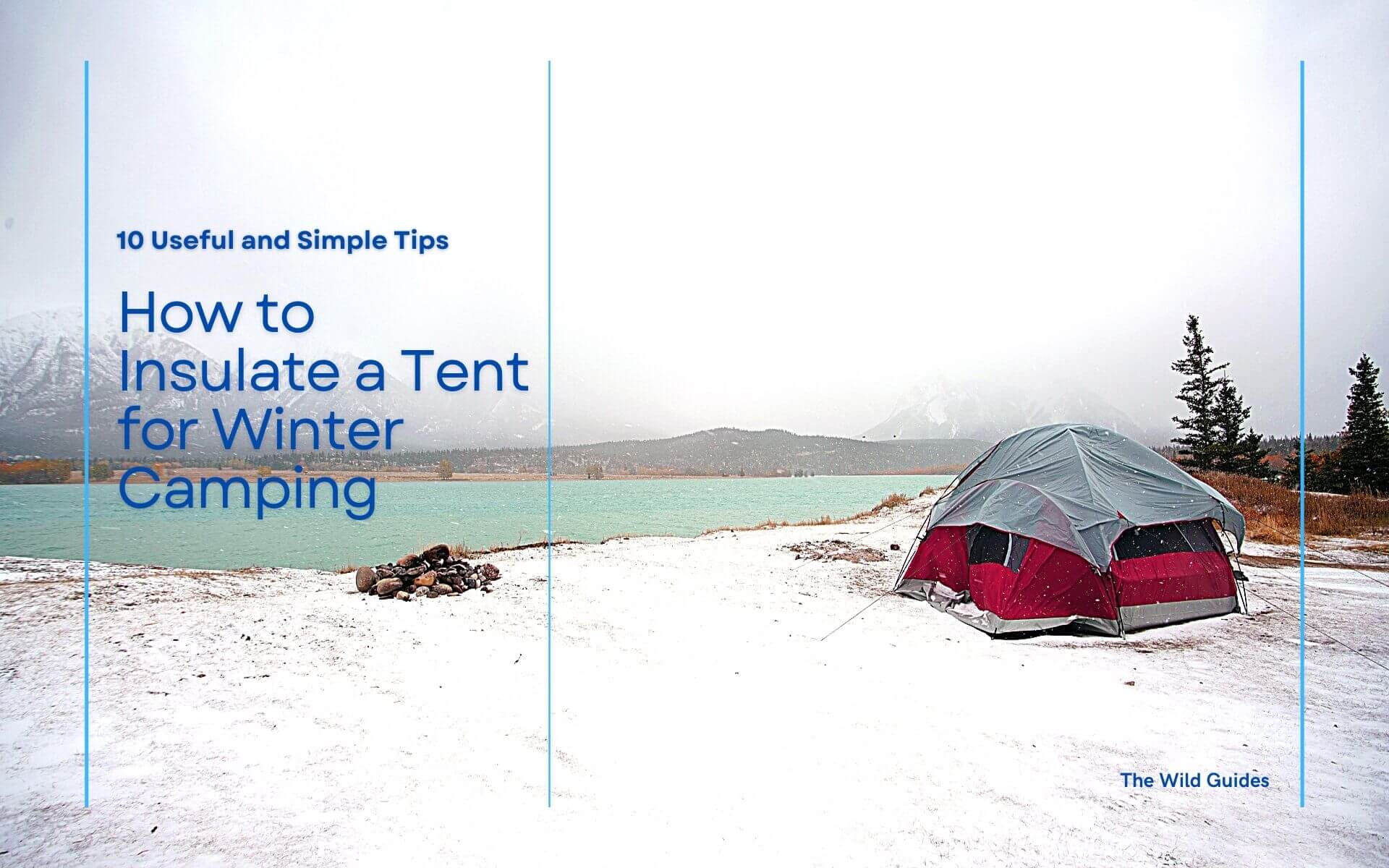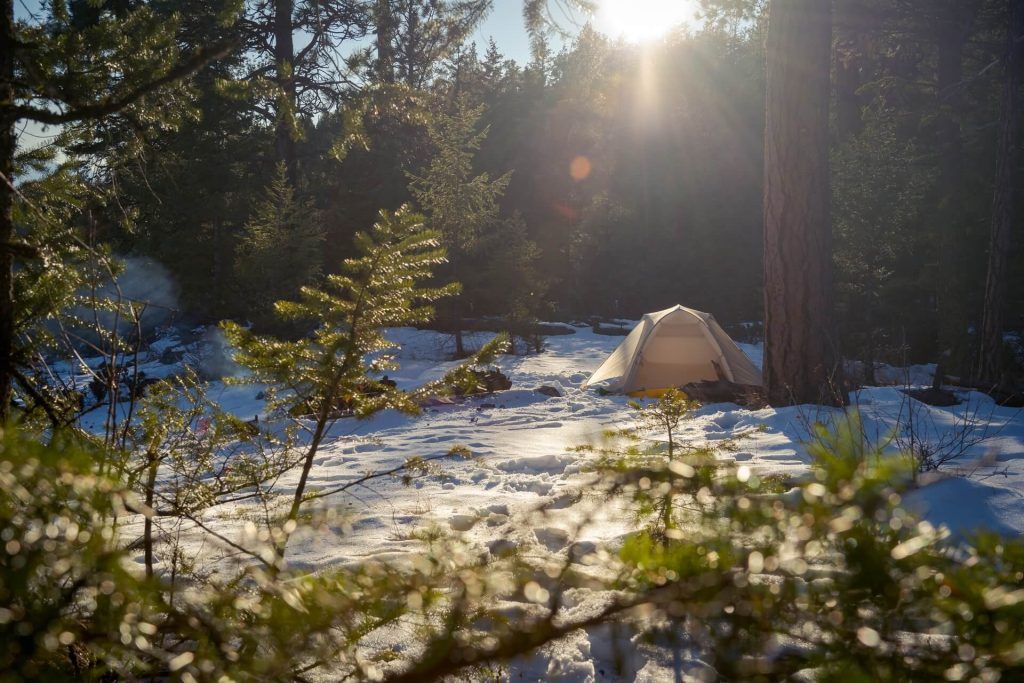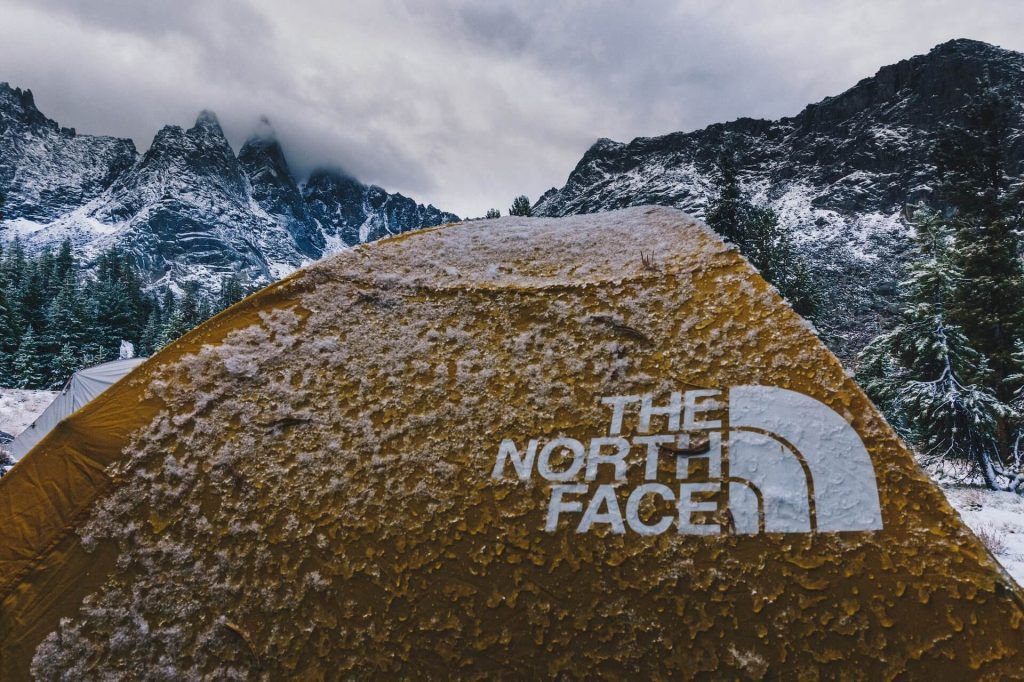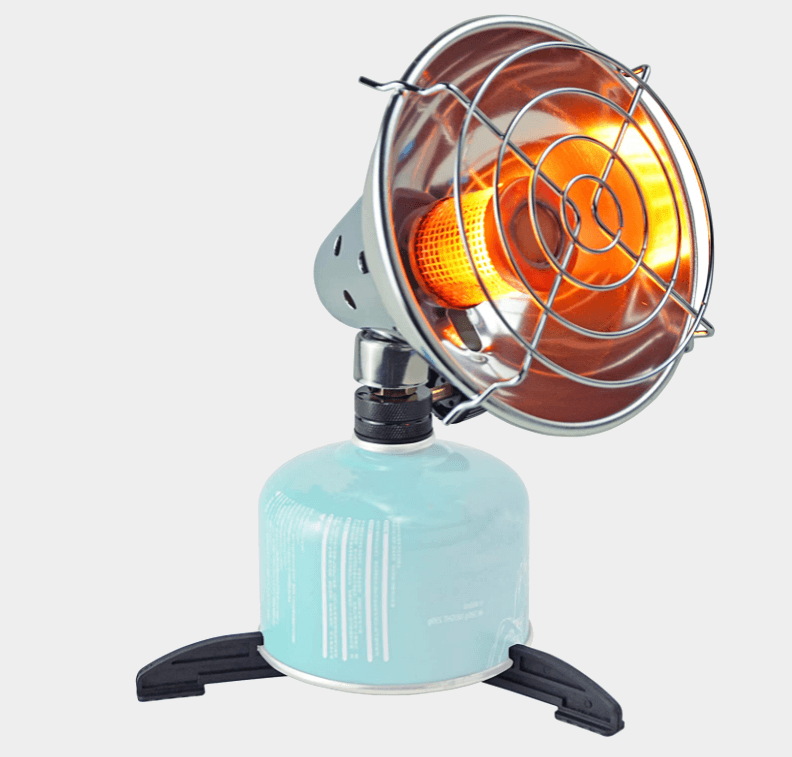10 Useful and Simple Tips on How to Insulate a Tent for Winter Camping

Don’t know how to insulate a tent for winter camping? You are not alone. Many people don’t know what it takes to winterproof a tent. This prevents them from stepping out of their comfort zone the moment mercury starts dropping. As a result, they only camp in the summertime.
Guess what? Winterizing a tent isn’t as challenging as some people make it to be. You just have to come prepared with the tools to shield your camp against cold temperatures and high winds. In this article, I’ve put together a few tips that will help you insulate your tent whenever you go winter camping.
1. Opt for a 4-season tent
First things first, you cannot insulate a tent that isn’t made for winter. Try as hard as you want, a tent made for summer camping will never keep you warm when it’s frigid out there. That’s why I suggest that you invest in a 4-season tent for your winter camping trip.
When compared with three-season tents, four-season tents have a thicker inner fabric to lock in the inner warmth and not let cold air inside. Four-season tents also have more anchor ropes and pegs than their three-season counterparts. This helps them stay stable in windy conditions.
There’s one thing you’d do well to keep in mind. When picking a 4-season tent, try to pick one as small as possible. A tent made for four persons will undoubtedly be more comfortable if only two people end up using it. But the heat it will waste won’t make the extra space worth it.
2. Use a tarp
Strong winds are a given in the winter months, especially if you’re going to camp in the mountains. If you don’t have added protection against them, better say goodbye to your nighttime warmth. The winds will also blow away any chances of you having a few hours of quality sleep.
A well-made tarp will prevent both unwanted scenarios. Apart from not letting the cold winter breeze make its way into your tent, it will reduce the noise the smashing of heavy winds against a tent brings at night. So regardless of what’s going on outside, you’d be able to enjoy a shut-eye.
Make sure you pitch the tarp in the direction the wind is coming from. This will allow the tarp to act as a shield against the incoming gust, preventing cold air from penetrating your shelter.

3. Cover the tent with a thermal blanket
Covering the tent with a thermal blanket will provide you with two benefits. The first is that it will block cold air, which always sinks, from infiltrating your tent. Putting a thermal blanket over the tent will also prevent your body heat, which always rises, from escaping outside.
The best option for that would be a thermal space blanket since you would be placing it on top of your tent. A space blanket is usually light, and it can withstand harsh weather conditions better than some of the more organic materials.
If you know there won’t be any precipitation or are comfortable with packing in a wet damp heavy blanket, you could also try one made of wool. The wool blankets are more popular than others – sheepskin, boiled woolen, and tightly woven felted. All of them are exceptionally rugged and hardwearing. Go for the one your budget allows you to.
Having decided the material of construction of the blanket, the next factor you need to pay attention to is the blanket’s weight. Opt for a pocket-size blanket if you usually explore the outdoors on foot. But if you always drive to the camping spot, then prioritize your comfort over the blanket’s weight.
4. Line the tent’s walls and ceiling
Lining the tent’s interior (roof and the walls) isn’t necessary, as long as the thermal blanket does what it’s supposed to do. However, if you feel that the thermal blanket isn’t cutting it when it comes to keeping the tent’s interior comfortable, you might want to apply this trick.
There are various ways you could line your tent’s interior. The simplest is cutting up parts of a worn-out space blanket and using them to line your tent’s walls and ceiling. As long as it isn’t frigid out there, the pieces should be able to keep your tent’s occupants warm.
However, if the weather outside is too cold to be kept at bay by cuttings of a space blanket, consider lining your tent’s walls and ceiling with sheets of insulated fabric. While doing that, also close up the tent’s screen doors and mesh windows. This will limit the cold air entering your sleeping area at night.

5. Build a windbreak with snow
Unless you’re camping in frigid conditions, you can always use a tarp as a windbreak. However, if you’re camping in extremely snowy conditions, building a large wall of snow might be your best bet to stop drifting snow from accumulating against the side of your shelter.
Keep in mind that you need a lot of snow to build a windbreak from. My experience tells me that you’d need at least 60cm of snow on the ground to build a 2 feet tall wall. Do the math, and it turns out you’d need almost 30cm of snow for every 1 foot of a wall.
You need two things to build your snow wall. The first is a camp shovel (an essential part of every winter camping gear). You also need a few hours of free time. Use the shovel to pile the snow on the side the winds are coming from. Keep going until you’ve built a 2 to 3 feet wall.
6. Cover your tent’s floor
It isn’t only your tent’s ceiling and walls that you have to worry about. The tent’s frozen wet floor might also leak the cold into your shelter if you don’t do anything about it.
One of the easiest ways to cover your tent’s floor is to use a groundsheet or tent footprint. These are large cuttings of thick, waterproof fabric. They are insulated from both sides and offer the level of protection needed to keep the frozen winter ground’s cold from making its way into your shelter.
The majority of tent manufacturers sell purpose-built footprints. These are manually cut to meet the exact layout of the accompanying tent. However, if you can’t find a custom-made footprint, the next option involves laying a traditional camping tarp on the ground.

7. Insulate the floor
Covering the floor with a custom-made footprint or tarp will keep the cold out in most conditions. Then again, if you’re camping in very snowy conditions, you may need to put something extra on top of the floor-covering to insulate your shelter against the cold.
A simple and affordable way to do this is to place large pieces of foam padding over whatever it is that is covering your tent floor. Covering your shelter’s floor with foam padding will work both ways – it will prevent heat from escaping the shelter and external cold from creeping into the tent.
Insulating the floor is a must-have for people who will be sleeping inside sleeping pads. They are more vulnerable to the hypothermic effects of the frozen ground than someone sleeping on a cot.
8. Place rugs over the floor
Keep in mind that no matter how thick your rugs are, their insulating ability can never compete with that of foam padding. It’s thus advised that you use rugs alongside and not in place of foam padding.
Apart from providing extra warmth, carpets and rugs will also make your tent cozy and comfy. However, if you don’t have spare rugs or carpets at your disposal, you can do the next best thing and place blankets on the floor.
Should you decide to line your shelter’s floor using blankets, take care while moving around, as blankets won’t stay still unless you do. Try to walk carefully on the blankets to reduce the risk of slippage. If you’ve solid items on hand, place them on the blankets’ corners to reduce slippage.

9. Use a tent heater
Provided you’ve completely winterized the inside and outside of your tent, but still find that the tent insulation can’t keep you warm and comfy at night, you might want to invest in a tent heater ahead of your upcoming camping trip.
Tent heaters come in multiple shapes and sizes. Most people opt for gas-powered models and use a gas cylinder to power the heater. However, if you’re going to do winter camping in an RV, you could also make do with an electric heater.
Keep in mind that tent heaters can cause a fire hazard if not used properly. Take proper care if you’re using them. If you do not feel comfortable using a potential fire hazard in your tent, check out some of the other suggestions I’ve piled together for tent heating.
10. Invest in a winter sleeping bag
Make sure the sleeping bag is rated for 0 degrees Fahrenheit. Such bags are surprisingly affordable and do a fine job of keeping the cold out on frigid nights. Make sure the temperature marked is within the “comfort” zone and not the “extreme” one. Often, sleeping bags are not tested in real field conditions and you cannot entirely trust the temperature ratings of a sleeping bag. Always take it with a pinch of salt.
Consider purchasing a pair of thermal socks, too, as they will help keep your feet warm. Also, if you want to heat your sleeping bag from inside, consider buying heat packs or a hot water bottle. Both will produce more than enough heat to warm up the sleeping bag.
In conclusion
Camping in winter is a fantastic adventure. There usually are no people nearby, most bears are hibernating, and you can enjoy a truly magical landscape you would never see in any other season. But to make sure you have a great and pleasant experience, make sure to prepare your tent and other winter gear in advance.
Check out some of my other articles on outdoor recreation
- 100+ Amazing Facts About Camping, Wildlife & Wilderness
- Useful Wildlife Watching Tips to Enjoy Nature Safely
- Tubbs Flex TRK Snowshoes: An Honest and Simple Review on What’s Important
- 18 Amazing No Cook Camping Food Ideas For Your Next Camping Trip
- Types of Camping: 17 Perfect Ways to Enjoy Wilderness
- Goal Zero Yeti 1500X vs Jackery Explorer 1500
